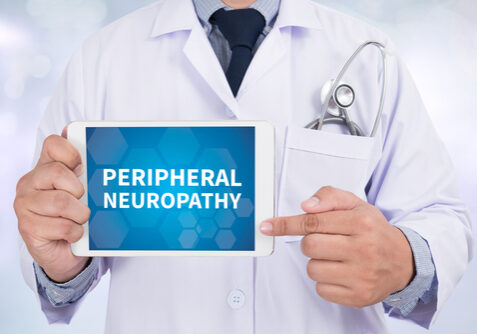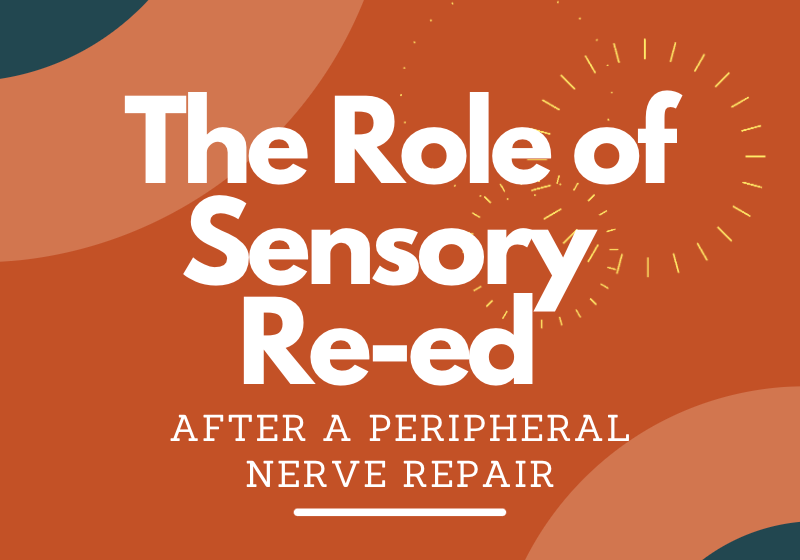By: Rachel Reed
The transition to parenting can be difficult on a mother or parent’s body, especially when considering the increase in repetitive hand use required to care for a baby. The most common upper extremity conditions that develop during pregnancy and postpartum are carpal tunnel syndrome and de Quervain’s tenosynovitis (Wagner, 2019). Frequently, new mothers and parents are unaware of ergonomics and task modifications that can help to prevent these issues, and they typically don’t end up receiving this education until they are already experiencing pain.

Carpal Tunnel Syndrome
Carpal tunnel syndrome (CTS), characterized by tingling and numbness in the first three digits due to compression of the median nerve at the transverse carpal ligament, is common in both pregnancy and postpartum. Pregnant women are predisposed to this condition due to hormonal fluctuations, fluid accumulation, nerve hypersensitivity, and glucose level fluctuations (Zyluk, 2013). Typically, symptoms are mild, and treatment consists of wearing an orthosis nightly, and occasionally, a steroid injection may be recommended. Symptoms usually resolve following delivery or breastfeeding but may persist for up to three years (Zyluk, 2013). CTS can also be the result of repetitive or sustained hand and wrist movements while breastfeeding or bottle feeding (Wagner, 2019). For example, mothers may curve their hand or wrist around their baby’s head to support them, which causes sustained compression at the carpal tunnel (carpal tunnel from holding baby). In these cases, occupational therapists can recommend activity modifications to reduce the amount of strain on the wrist while breastfeeding (Carpal Tunnel Breastfeeding).
Tips for reducing CTS symptoms while breastfeeding:
- Use pillows and blankets under the wrists while breastfeeding to avoid undue curvature at the wrist while holding the baby.
- Breastfeed or bottle feed while lying down, if possible. Alternate feeding positions to prevent repetitive wrist motions and strain.
- Wear a wrist hand orthosis while breastfeeding/bottle feeding or during other aggravating tasks to keep the wrist in a neutral position.
De Quervain’s Tenosynovitis
De Quervain’s tenosynovitis is caused by inflammation of the tendon sheaths in the first dorsal compartment (extensor pollicis brevis and abductor pollicis longus), which elicits pain on the radial side of the wrist (Skoff, 2001). This condition can develop due to hormonal changes and fluid accumulation in pregnancy, but often times, this condition develops over time as a new parent cares for their newborn baby. When the mother or new parent repetitively picks up their child under the baby’s armpits, with their thumbs extended and pointed upwards, they put excessive stress on the tendons in the first dorsal compartment. This condition can also develop due to the repetitive nature of holding a baby and managing breastfeeding or bottle feeding in a specific position for a prolonged period of time, multiple times per day (carpal tunnel syndrome breastfeeding). Conservative treatment is typically successful, often including a steroid injection and/or a thumb spica orthosis (Avci, 2002). There are also some easy modifications that can be made to reduce symptoms or to avoid developing de Quervain’s tenosynovitis.
Tips for reducing pain from de Quervain’s tenosynovitis:
- Avoid picking the baby up from a highchair, car seat, crib, etc., with the wrist radially deviated and thumbs extended away from the palm. Instead, try to lift the baby with one hand under their bottom, one hand behind their back, and with thumbs close to the palm of the hand. Use the whole hand instead of putting stress on the thumbs!
- Be aware of how the hand is positioned to support the baby while breastfeeding or bottle feeding. Avoid positions that strain the wrist or cause the thumb to be abducted for prolonged periods of time.
- Wear a thumb spica orthosis with aggravating activities to keep the thumb and wrist in a neutral position.

Summary
There are other upper extremity conditions that may develop during pregnancy and/or to a new parent, including cubital tunnel syndrome, neck and shoulder pain, and tendonosis. However, CTS and de Quervain’s tenosynovitis are the most common (Wagner, 2019). With education about correct ergonomics, these conditions can be prevented while caring for a new baby.
References
Avci, S., Yilmaz, C., & Sayli, U. (2002). Comparison of nonsurgical treatment measures for de Quervain’s disease of pregnancy and lactation. The Journal of hand surgery, 27(2), 322–324. https://doi.org/10.1053/jhsu.2002.32084
Skoff H. D. (2001). “Postpartum/newborn” de Quervain’s tenosynovitis of the wrist. American journal of orthopedics (Belle Mead, N.J.), 30(5), 428–430.
Wagner, A. (2019). Upper Extremity Pain in Breastfeeding Mothers: A Narrative Review of the Literature. Journal of Hand Therapy, 32, 560-561.
Zyluk A. (2013). Carpal tunnel syndrome in pregnancy: a review. Polish orthopedics and traumatology, 78, 223–227.
2 Comments
Leave a Comment
More To Read
Do you know the secret ingredient to recovering from an injury?
Do you know the secret ingredient to recovering from an injury? I will give you a hint it is 5 letters and begins with the letter S. SLEEP Have you ever asked yourself a question – does sleep help injuries heal? This is for you to share with your patients but also serve as a…
Read MoreHand Function in Chemotherapy-Induced Peripheral Neuropathy: A Rapid Review
Osumi, M., Sumitani, M., Abe, Hiroaki, A., Otake, Y., Kumagaya, S.-I., & Morioka, S. (2019). Kinematic evaluation for impairment of skilled hand function in chemotherapy induced peripheral neuropathy. Journal of Hand Therapy. (32)1, 41-47. https://doi.org/10.1016/j.jht.2017.06.003 By: Rita Steffes The Skinny: Chemotherapy has many lasting side effects (one of which is hand numbness after chemotherapy), with…
Read MoreThe Role of Sensory Re-education After Nerve Injury
Priya, B. A. (2012). Effectiveness of Sensory Re-education after Nerve Repair (Median or Ulnar Nerve) at the Wrist Level. Indian Journal of Physiotherapy & Occupational Therapy, 6(3), 62–68. The Skinny The human nervous system is incredibly complex and, once damaged, requires significant time to repair. A previous study (Bentzel, K 2002) identifies that with peripheral…
Read MoreSign-up to Get Updates Straight to Your Inbox!
Sign up with us and we will send you regular blog posts on everything hand therapy, notices every time we upload new videos and tutorials, along with handout, protocols, and other useful information.






This is good information…
Yes, i’ve seen a number of mothers over the years. I typically make them a radial based thumb spica (DQ) and a general cock-up for the CTS…No treatment until several months after birth of child…It typically resolves
My name is Prudence Thabane from South Africa… oooh noo this is a nightmare for me currently. I’m suffering from this post baby . I’m a new mom with a month and 3 weeks bby. does this ever go away? the pain during the night… I can’t sleep. steroids injections don’t help that muc
I need a permanent solution. this is ruining my quality of life.